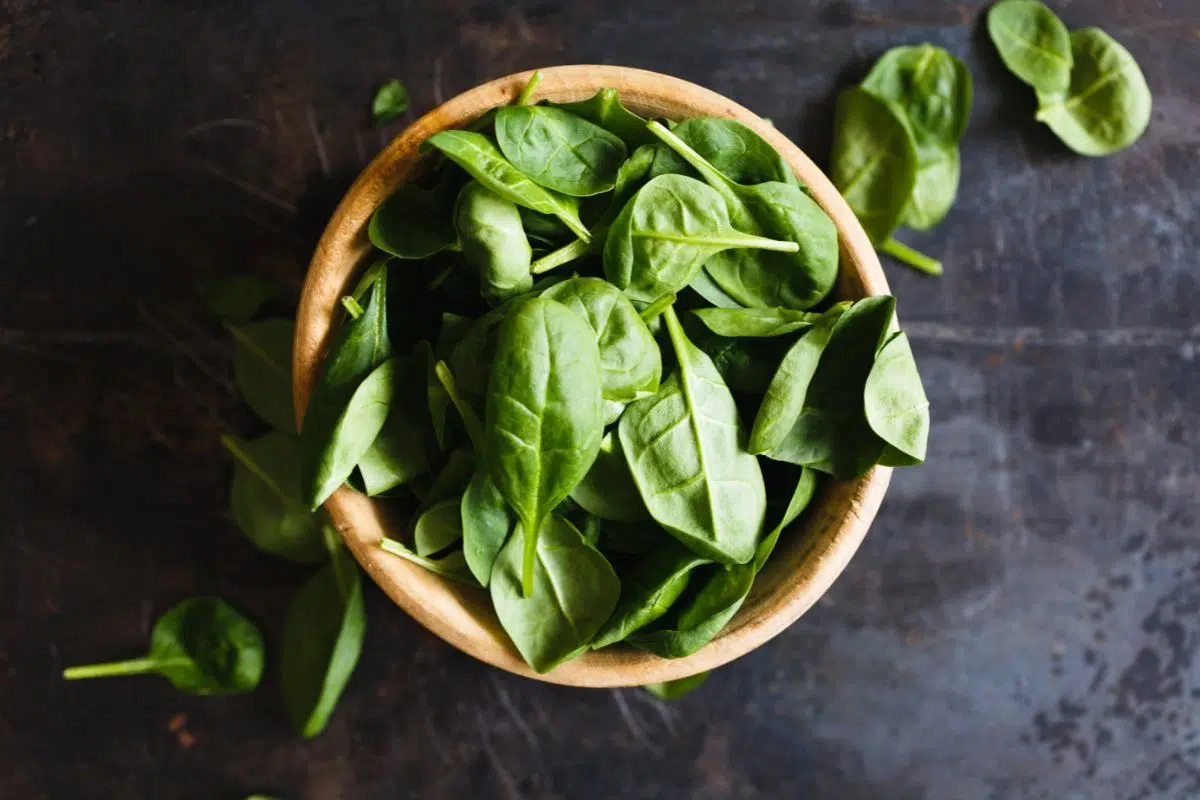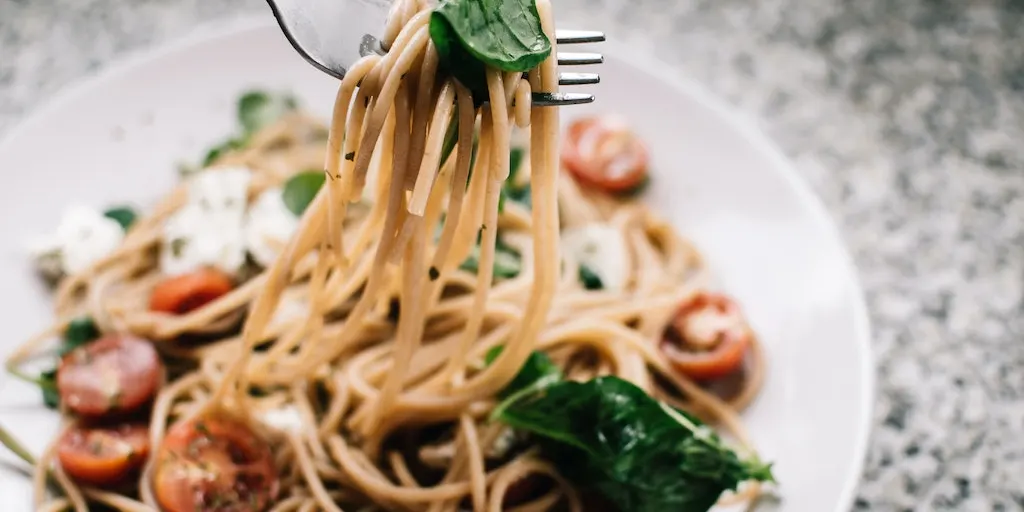Basil has the most wonderful, distinctive taste and aroma.
So popular, it’s often nicknamed “the king of the herbs”.
It’s often a feature in both Italian and Asian cuisine.

And it’s very easy to grow to boot. Indoors or outdoors, it will thrive in any location.
But once you do start growing basil, how do you make the most of it?
That’s the focus of this article…
We’re going to cover different ways to store your fresh basil, how to make the most amazing pesto sauce from basil, and give you plenty of ideas of how to incorporate basil into various different dishes, before answering some of your most frequently asked questions on the subject.
And without further ado, let’s get straight to it!
Different Ways To Store Your Fresh Basil
Storing Fresh Basil On Your Countertop
Your fresh basil won’t last long if it’s not properly looked after.
If you no longer wish to keep the plant and just want the leaves, you can store them at room temperature in your kitchen.
All you have to do is trim the stem of each leaf and place the leaves in a jar of water.
But rather than placing a lid on the jar, simply rest a plastic bag over the top instead, and don’t tuck it under the jar.
This helps to preserve the basil leaves while also allowing the basil to breathe.
Storing Basil In The Refrigerator
If, however, you want to keep the basil for more than a few days then you can take this jar of basil leaves in water and place it in the refrigerator, complete with a loose bag to cover it.
Freezing Your Basil
Another option is to freeze the basil.
Freezing retains the fresh taste much better than drying it.
All you need to do is chop the fresh basil leaves, place the chopped leaves into ice cube trays, and cover the ice cube trays with water.
When you’re ready to use them again, you’ll have to allow time for the basil to thaw.
Baking Your Basil To Preserve It
If you want to preserve your basil for even longer, say up to a year or so, then you have the option of baking it.
First you wash the basil leaves, then remove the stems and dry them.
Then, preheat your oven to 200 degrees Fahrenheit.
Line an oven tray with parchment paper and place the basil on top.
Then place it on the oven’s upper rack and bake it until it’s dry and crumbly.
This could take anywhere between two and four hours.
Next, allow it to cool completely before crumbling it and storing it in an airtight container.
How To Make An Amazing Pesto Sauce
Here’s how to make an amazing garlic pesto sauce that goes great with pasta dishes, gnocchi, and potatoes.
Ingredients
- 20g basil leaves
- 25g cashew nuts
- Minced garlic to taste
- 20g pine nuts
- 4 tablespoons olive oil
- A pinch of salt and black pepper
Method
- Blend all of the ingredients together in a food processor
Ideas Of How To Incorporate Basil Into Different Dishes
Salad

As much as we all know we should be eating healthily, it can be hard to enjoy eating salad for many people.
But with a small handful of basil leaves, you can make your salads much more flavorful and enjoyable.
Pizza
Fresh basil leaves make for an excellent pizza topping, or calzone ingredient, especially when the pizza has a tomato paste, as they usually do.
Sauces
Basil is an excellent ingredient for pasta sauces and casseroles.
The pesto sauce recipe above is a particular favorite of ours.
It goes great with pasta, gnocchi, or potatoes, or you can also use it as a flavorful sandwich spread.
Soups
You can also make a purée with your basil leaves and a little olive oil in a food processor, and this helps to make an excellent additional ingredient for tomato soup.
On Bread Or Rye
Basil is also a great ingredient for a sandwich or toastie.
And it also goes great as a garnish for rye bread, avocado toast, cheese on toast, scrambled egg on toast, and bruschetta with salsa.
In Risotto
Fresh basil leaves go great in tomato and mascarpone risotto.
Stir-Fries
Using basil leaves, and in particular Thai basil leaves, in stir-fries is also very popular, especially in Asian cuisine.
Drinks
You can also use fresh basil in drinks as well, for a unique, flavorful hit.
For example, you can have basil tea, or you can add basil leaves to your lemonade.
Dips
And finally, you can also use basil as an ingredient for dips for chips or vegetable crudités, for example in Greek tzatziki, or Mexican guacamole.
Answers To Your Most Frequently Asked Questions
What Can I Do With Too Much Fresh Basil?
If you have a lot of fresh basil to use up, I 100% recommend making some pesto sauce.
You can use the recipe provided above, and simply increase the amount of each ingredient according to the weight of basil you have.
Then give out jars of your homemade pesto sauce to family and friends.
Alternatively, you can preserve the basil leaves for later use by either freezing them or baking them.
Is It Better To Freeze Or Dry Basil?
This all depends on just how long you want your basil to last, and whether you want it to taste fresh.
Freezing it is the best way to preserve that fresh basil taste, but generally speaking you should use frozen foods within 3 months.
While baking and crumbling your basil and storing it at room temperature in an airtight container will lose the fresh taste, but it can be kept for an entire year.
Wrap Up
I’m sure you’ll agree that with so many different ways to use and store basil that it’s well worth growing your own.
You are spoiled for choice when it comes to how to use it.
But remember, don’t overdo it, because it has a particularly strong flavor.

Ingredients
- 8 ounces pasta
- 6 tablespoons unsalted butter
- 4 cloves garlic
- 1/2 cup fresh basil leaves
- Salt and pepper
- Grated Parmesan cheese
Instructions
- Cook the pasta according to the package directions until al dente. Drain the pasta and reserve about 1/2 cup of the pasta water.
- While the pasta is cooking, melt the butter in a large skillet over medium heat. Cook the butter until it turns golden brown and has a nutty aroma. This should take about 2-3 minutes.
- Add the minced garlic to the skillet and cook until fragrant, stirring constantly. This should take about 30 seconds.
- Remove the skillet from the heat and add the chopped basil leaves, stirring to combine.
- Add the cooked pasta to the skillet and toss until the pasta is coated with the brown butter sauce. If the pasta seems dry, add some of the reserved pasta water a little at a time until the desired consistency is reached.
- Season the pasta with salt and pepper to taste.
- Serve the pasta hot, sprinkled with grated Parmesan cheese. Enjoy your quick and easy Garlic Basil Brown Butter Pasta!
